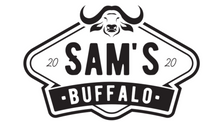Comparing Buffalo Leather and Cow Leather: Exploring the Differences
Buffalo leather and cow leather are two popular types of leather used in various products, including bags, jackets, and footwear. While both buffalo and cow leather have their unique characteristics, understanding their differences can help you make an informed decision when choosing leather products. Let's explore the key distinctions between buffalo and cow leather:
-
Durability: Buffalo leather is known for its exceptional durability. It is thicker and more robust compared to cow leather, making it highly resistant to wear and tear. Buffalo leather products are often considered long-lasting and suitable for rugged use. Cow leather, on the other hand, is also durable but may not be as sturdy as buffalo leather.
-
Grain and Texture: Cow leather generally has a more consistent grain pattern and smoother texture. It is often preferred for a polished and refined look. Buffalo leather, however, tends to have a coarser and more pronounced grain, lending a rustic and natural appeal to products made from it.
-
Softness and Flexibility: Cow leather is typically softer and more flexible than buffalo leather. It is supple and molds to the shape of the wearer's body, providing a comfortable fit. Buffalo leather, while still pliable, is usually stiffer and requires a break-in period to reach its optimal flexibility.
-
Weight: Buffalo leather is denser and heavier than cow leather. If weight is a concern, cow leather might be a more suitable choice, especially for accessories like bags that need to be carried for extended periods.
-
Price: Due to its durability and unique qualities, buffalo leather is often more expensive than cow leather. Cow leather is widely available and generally more affordable, making it a popular choice for a range of leather goods.
-
Sustainability: Buffalo leather is often considered more sustainable than cow leather. Buffaloes are typically raised for meat and milk, and their hides are a byproduct of the meat industry. Utilizing buffalo hides helps reduce waste and supports the ethical use of resources. Cow leather, while still a byproduct of the meat industry, is derived from a more prevalent source, and sustainability can vary based on the specific practices of the leather industry.
When choosing between buffalo and cow leather, consider your specific needs, preferences, and the intended use of the product. If durability and a rugged aesthetic are important, buffalo leather might be the preferred choice. If a softer texture, flexibility, and affordability are more important, cow leather may be the better option. Ultimately, both types of leather offer their unique characteristics and appeal, and the decision depends on personal preference and the desired attributes for your leather products.


Leave a comment